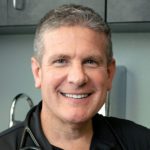Major Depressive Disorder
When a person’s depression significantly impacts their ability to function in daily life, it may indicate Major Depressive Disorder (MDD). The National Institute of Mental Health reports that about one in 15 adults in the United States experiences depression each year. with one in six people experiencing it at some point in their lives. Fortunately, many treatment options are available for individuals dealing with major depressive disorder, also known as clinical depression.
Battling addiction and ready for treatment?
What Is Major Depressive Disorder?
Major depressive disorder is a serious mood disorder that can greatly disrupt a person’s life, including their work, relationships, and overall well-being.
According to the American Psychiatric Association (APA), major depressive disorder (MDD) is a mental health condition that affects how a person feels, thinks, and behaves.
Someone suffering from major depressive disorder will often experience prolonged periods of sadness and loss of interest in hobbies or daily activities.
To be diagnosed with major depressive disorder, as explained in the Diagnostic and Statistical Manual of Mental Disorders (DSM-5), you need to have these things:
- You must have at least five symptoms that last for at least two weeks.
- One of those symptoms has to be feeling sad or losing interest in things you used to enjoy.
- You must notice a change in how you usually function daily.
Situational Depression VS Major Depressive Disorder
While everyone feels sadness and depression from time to time, these feelings don’t necessarily mean that there is a more significant mental health issue.
Unlike someone who might experience sadness on occasion or not be in the mood to do something, when you suffer from major depressive disorder, you can’t just “snap out of it.”
Major depressive episodes will occur without warning or explanation and can last for weeks or more, causing significant distress and impairment.
Situational depression describes occasions where you might experience sadness and depression due to something that occurred, such as losing your job or going through a breakup. These feelings will dissipate, and you will return to feeling normal.
Alternatively, major depressive disorder is a mental illness where these feelings of sadness and depression don’t go away. They can also occur for seemingly no reason and can be debilitating.
Symptoms of Major Depressive Disorder
Recognizing the symptoms of Major Depressive Disorder (MDD) is essential for identifying it early and getting help. Understanding these symptoms is the initial step toward seeking assistance and finding effective treatment for anyone dealing with depression.
MDD symptoms can manifest in physical and emotional ways, ultimately impacting a person’s quality of life.
Symptoms associated with major depressive disorder include:
- Irritability
- Changes in sleep patterns, including insomnia or sleeping more than usual
- Feelings of worthlessness
- Feelings of sadness, hopelessness, or emptiness
- Emptiness
- Lack of energy
- Changes in eating habits (eating more or less than normal)
- Fluctuation in weight, including either weight loss or weight gain
- Anxiety
- Restlessness
- Slowed speaking and body movements
- Feeling worthless
- Fixating on past failures
- Having trouble concentrating or making decisions
- Unexplained physical ailments
- Increased thoughts of death
- Suicide attempts
MDD Symptoms in Adolescents and Teens
The symptoms of Major Depressive Disorder (MDD) in adolescents are similar to those in adults but may manifest differently.
While adults may express sadness or hopelessness more openly, adolescents might exhibit irritability or agitation.
Additionally, adolescents with MDD may experience the following symptoms:
- Initial use or increased use of substances of abuse
- Poor performance at school
- Refusing to go to school or skipping school
- Eating or sleeping either too much or not enough
- Changes in hygiene and/or appearance
- Signs of self-harm (i.e., cutting, burning)
- Social withdrawal or isolation
- Having trouble with peers
MDD Symptoms in Older Adults
MDD symptoms can also occur in elderly adults, but again, these symptoms may be different from what someone might expect. Elderly individuals may be more likely to experience physical complaints such as fatigue, aches, and pains rather than primarily emotional symptoms.
Cognitive symptoms such as memory difficulties or decreased concentration may also be more prominent.
Unfortunately, depression is also common in those with Alzheimer’s and other dementias but may not be obvious due to the other personality changes that can appear with these conditions.
Additional symptoms of depression in older people include:
- Having trouble remembering things
- Personality changes
- Not wanting to go out of the house
- Fatigue
- Loss of appetite
- Sleep problems
- Physical aches and pains
- Health problems
- Suicidal thoughts
- Self-harm
Types of Depression
Major depressive disorder (MDD) is just one type of depression that mental health professionals may diagnose.
However, various other depressive disorders have similar symptoms, including:
- Persistent feelings of sadness
- Loss of interest in activities
- Changes in appetite or weight
- Sleep disturbances
- Fatigue
- Feelings of worthlessness or guilt
- Difficulty concentrating
- Thoughts of death or suicide
Because of these overlapping symptoms, it can be challenging for individuals to self-diagnose or differentiate between different types of depression without professional assessment.
Mental health professionals use diagnostic criteria outlined in the Diagnostic and Statistical Manual of Mental Disorders (DSM-5) to distinguish between various depressive disorders based on the duration, severity, and specific symptoms experienced by the individual.
Bipolar Disorder
Bipolar disorder is a mood disorder characterized by periods of extreme mood swings that include episodes of depression and episodes of mania or hypomania.
While major depressive disorder (MDD) primarily involves depressive episodes, bipolar disorder involves both depressive episodes and manic or hypomanic episodes.
Postpartum Depression
While major depressive disorder (MDD) can happen at any time, postpartum depression specifically occurs within the first few weeks to several months after childbirth.
Symptoms of postpartum depression are similar to those of MDD and may include feelings of sadness, hopelessness, irritability, or guilt, changes in appetite or sleep patterns, fatigue, difficulty bonding with the baby, and thoughts of harming oneself or the baby.
While many assume the mother can only experience perinatal and postpartum depression, it is not gender-specific, and one or both parents can experience this condition.
Premenstrual Dysphoric Disorder (PMDD)
Premenstrual Dysphoric Disorder (PMDD) is a severe form of premenstrual syndrome (PMS) that affects some women during the menstrual cycle. Unlike MDD, which can happen at any point in a person’s life, PMDD happens as a result of hormonal fluctuations.
While PMDD may share similarities with MDD, it also includes irritability and severe mood swings.
Seasonal Affective Disorder (SAD)
Seasonal Affective Disorder (SAD) is a type of depression that typically occurs during the fall and winter months, particularly in regions where there are significant changes in weather patterns and reduced exposure to sunlight.
As daylight hours decrease and the weather becomes colder and gloomier, individuals with SAD may experience a worsening of depressive symptoms, like low mood, difficulty concentrating, fatigue, changes in appetite or weight, and increased feelings of sadness or hopelessness.
Psychotic Depression
Psychotic depression is a severe form of major depressive disorder (MDD) characterized by the presence of psychotic symptoms (i.e., hallucinations or delusions) alongside typical depressive symptoms like persistent sadness or hopelessness.
While both conditions share similarities in terms of mood disturbances, psychotic depression is distinguished by the presence of psychosis, which can significantly impact a person’s perception of reality.
Persistent Depressive Disorder
Also known as dysthymia, persistent depressive disorder (PDD) is characterized by chronic feelings of sadness or depressed mood that persist for years, whereas major depressive disorder (MDD) typically involves more severe and episodic symptoms.
While individuals with MDD may experience intense periods of depression followed by periods of remission, those with PDD may have a more persistent but less severe form of depression that lasts for much longer stretches of time.
Major Depressive Disorder Causes and Risk Factors
While the exact cause of major depressive disorder is unknown, there are a variety of risk factors that can increase the chances that someone might suffer from MDD, such as genetics, brain chemistry, and gender.
- Genetics: Someone with a family history of depression or anxiety disorders is more likely to develop MDD.
- Brain Chemistry: Research indicates that changes in the function of the neurotransmitters in the brain (especially serotonin, dopamine, and norepinephrine) can significantly contribute to the development of MDD.
- Substance Abuse and Addiction: Alcohol and/or drug use can worsen or trigger depressive symptoms. Substance abuse can also alter brain chemistry, disrupt sleep patterns, and impair judgment, increasing vulnerability to depression.
- Hormones: Changes in a person’s hormones can cause or trigger a depressive episode. Hormone shifts can occur due to aging, menstrual cycles, pregnancy/giving birth, or problems with other organs (i.e., thyroid).
- Childhood Adversity and Trauma: Early life experiences, such as childhood abuse, neglect, or trauma, can have long-lasting effects on mental health and increase the risk of developing MDD later in life.
- Life Events and Environment: Certain life events can increase the risk of depression, including trauma, abuse, isolation, lack of support, or the death of a loved one. Socioeconomic factors such as poverty or unemployment may also contribute to the development of MDD.
- Medical Conditions: Certain medical conditions can increase the risk of depression as well, including cancer, thyroid issues, diabetes, Parkinson’s, and Alzheimer’s. The physical and emotional burden of managing chronic illness can contribute to feelings of severe depression and hopelessness.
Depression and Addiction
Major Depressive Disorder (MDD) and addiction often go hand in hand. The relationship between MDD and addiction is complex, and each condition can contribute to the other’s development and exacerbation.
How Are MDD and Addiction Related?
People with MDD are at a higher risk of developing substance use disorders (SUDs) compared to the general population. According to a study published in the journal JAMA Psychiatry, people with MDD are twice as likely to develop substance use disorders (SUDs) compared to those without depression.
In addition, some individuals with MDD may experience treatment-resistant depression, where standard treatments like antidepressant medications and therapy aren’t effective.
In these instances, people may turn to drugs or alcohol as a way to self-medicate and alleviate their depressive symptoms temporarily. However, substance use can worsen depression over time and lead to a vicious cycle of dependence and worsening mental health.
Dual Diagnosis and Treatment
When someone is struggling with both MDD and addiction, it is referred to as a dual diagnosis or co-occurring disorder. Integrated treatment approaches that address both conditions simultaneously are essential for effective recovery.
Dual-diagnosis treatment may involve medication management, therapy, support groups, and lifestyle changes tailored to the individual’s unique needs.
If you or someone you care about is struggling with depression, help is available.
Major Depressive Disorder Treatment Options
Living with Major Depressive Disorder (MDD) can feel overwhelming, but understanding your treatment options is an important part of finding relief.
You can try many things to feel like yourself again, from talk therapy to medications and lifestyle changes.
Medications
There are a wide variety of medications currently on the market that can help with the treatment of depression. These medications work in different ways to regulate brain chemistry and alleviate symptoms of depression.
It’s important to work closely with a healthcare provider to find the right medication and dosage that works best for you. Individual responses to medications can vary, and some medications can have side effects that should be monitored.
Medications that have been FDA-approved to treat major depressive disorder include:
- Selective Serotonin Reuptake Inhibitors (SSRIs): SSRIs are the most commonly prescribed medications for MDD. They work by increasing serotonin levels in the brain, a neurotransmitter associated with mood regulation.
Examples: fluoxetine (Prozac), sertraline (Zoloft), and escitalopram (Lexapro)
- Serotonin Norepinephrine Reuptake Inhibitors (SNRIs): SNRIs increase the levels of both serotonin and norepinephrine, another neurotransmitter involved in mood regulation. They are often prescribed when SSRIs alone are not effective.
Examples: venlafaxine (Effexor) and duloxetine (Cymbalta)
- Monoamine Oxidase Inhibitors (MAOIs): An older class of antidepressants reserved for cases of severe depression or when other medications have not been effective. Examples: phenelzine (Nardil) and tranylcypromine (Parnate)
- Mood stabilizers: Primarily used to treat bipolar disorder, mood stabilizers are sometimes used to treat MDD—especially when the person is experiencing mood swings or if traditional antidepressant medications have not been effective.
Example: Lithium
Psychotherapy
Psychotherapy—otherwise known as “talk therapy”—plays a crucial role in the treatment of Major Depressive Disorder (MDD).
With a therapist, individuals can identify and challenge negative thought patterns, learn coping skills to manage their symptoms and explore and express their emotions in a safe space.
By working collaboratively with a therapist, individuals with MDD can develop healthier ways of thinking and behaving, ultimately improving their mood and overall well-being.
Typical forms of psychotherapy include:
- Cognitive Behavioral Therapy (CBT)
- Dialectical Behavioral Therapy (DBT)
- Interpersonal Therapy
Brain Stimulation Therapy
Those who suffer from treatment-resistant depression might receive brain stimulation therapy.
During brain stimulation therapy, a mild electrical current is sent through the brain, triggering a brief seizure. The seizure helps restore normal balance in the brain’s chemicals.
Examples of brain stimulation therapy include:
- Electroconvulsive Therapy (ECT)
- Transcranial Magnetic Stimulation (TMS)
- Vagus Nerve Stimulation (VNS)
Lifestyle Changes
In addition to therapy and medication, there are certain things that you can do on your own to help with your depression symptoms.
These home remedies include:
- Adopting a healthy and well-balanced diet
- Avoiding drugs and alcohol (other than prescribed medications)
- Getting plenty of sleep
- Exercising
- Yoga
- Meditation
- Mindfulness
Find Help For Major Depressive Disorder
If you or someone you know is struggling with depression, you deserve to receive support and treatment for this disorder.
Contact your primary care physician or licensed therapist to discuss treatment options. If you don’t have a healthcare provider or want a list of treatment professionals in your area, you can visit the SAMHSA online Behavioral Health Treatment Services Locator.
FAQs About Major Depressive Disorder
What is the difference between depression and major depressive disorder?
Depression is a general term that describes feeling sad, down, or hopeless for a period of time.
Major Depressive Disorder (MDD) is a specific type of depression that involves symptoms like persistent sadness, loss of interest in activities, changes in appetite or sleep, and feelings of worthlessness or guilt for at least two weeks.
Is chronic depression the same as major depressive disorder?
Not necessarily. Both chronic depression and major depressive disorder (MDD) involve feelings of sadness, low mood, etc., over a prolonged period.
However, chronic depression is a more umbrella term to describe different types of depression, and symptoms can last for months or years. With MDD, symptoms last for at least two weeks but aren’t usually as long-lasting as chronic depression symptoms.
What is a depressive episode?
A depressive episode is a period of time when someone experiences intense feelings of sadness, hopelessness, or emptiness that last for at least two weeks.
Depressive episodes are a key feature of Major Depressive Disorder (MDD) and other types of depression, and they can significantly impact a person’s daily life and well-being.
Can depression be cured?
Technically, there is no cure for depression, but Many people with depression find relief through a combination of therapies, such as medication, therapy, lifestyle changes, and support from loved ones.
How do I know if I’m depressed?
Common signs of depression include feeling sad or hopeless most of the time, losing interest in things you used to enjoy, changes in appetite or sleep patterns, feeling tired or having low energy, and having trouble concentrating or making decisions. If you’ve been experiencing several of these symptoms for at least two weeks and they affect your daily life, it may be a good idea to talk to a healthcare professional for support and guidance.
When should I see a doctor about my depression?
Everyone can experience depression now and again—especially related to life events (i.e., job loss, accident, grief, etc.) However, you should consider seeing a doctor about your depression if you’re experiencing symptoms for more than two weeks and they’re interfering with your work, relationships, or ability to enjoy life.
Does alcohol cause depression?
Yes and no. Drinking alcohol from time to time isn’t likely to cause any depression symptoms, but because alcohol is a depressant, it can increase symptoms of depression when consumed regularly.
People who already experience depressive episodes or have any mood disorder (i.e., major depressive disorder) are more at risk for developing or worsening their depressive symptoms due to alcohol.
Does drug use cause depression?
Drug use—especially illicit drug abuse—can disrupt normal brain function, potentially leading to depressed mood and other symptoms of depression. Additionally, the consequences of drug use, such as social isolation, financial problems, and legal issues, can also contribute to feelings of depression.
How do I get help for addiction and depression?
If you are dealing with both depression and addiction, you would ideally get treated for both conditions.
You can start by talking to a healthcare professional, such as your primary doctor or a therapist, who can provide guidance and support. Treatment options may include therapy, medication, support groups, and lifestyle changes. The key thing to remember is that you don’t have to manage it all alone.


